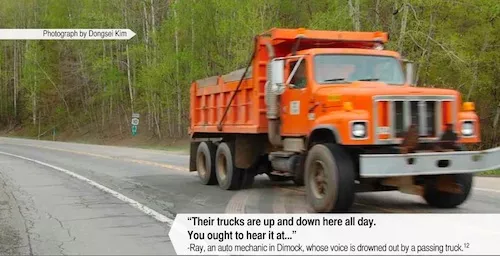Economic Impact

Drilling at its current pace is estimated to directly add 8,000 to 10,500 jobs in the next 5 years, according to the Pennsylvania College of Technology’s Marcellus Shale Education and Training Center (MSETC). Of highest need are jobs immediately associated with natural gas extraction. Approximately two-thirds of jobs will be blue collar. These include handling of heavy equipment and trucking and transportation of materials to the drill site. The remaining one-third of jobs are skilled jobs in areas such as engineering, geology, GIS site mapping, and paralegaling. As reported in the Wilkes-Barre Times Leader, these jobs look to be “well-paying jobs… ranging between $60,000 - $70,000.” [1] Each drill site will require 11.53 full-time equivalent workers and will involve 410 workers in over 100 occupations and 20 – 30 contracting companies. Most of these supporting companies are needed to help bring in drilling materials, such as sand and water used in the hydrofracking process. For example, many local companies such as regional freight railroad companies look to be rejuvenated from drilling. [2] These numbers, however, might be even higher as development currently continues and permits become approved. Including secondary industries, shale drilling can add 50,000 to 100,000 jobs per year in Pennsylvania. [3]
The extracting phase of drilling will be fairly quick. However, infrastructure also needs to be built for transportation, through pipelines, and storage of natural gas. Some jobs will still be need as part of the production phase of natural gas extraction. Marcellus Shale gas is considered to be “wet” gas, a mixture of hydrocarbons such as butane and propane in addition to the “dry” methane natural gas. Thus, this extracted gas will need to be transported to processing facilities before it can be distributed. This delivery network of pipelines, thousands of miles long, will be the long-term mark left from this drilling. [4] Given Pennsylvania’s central location to major population centers in the Northeast, it is expected to be extremely profitable as well. Volume-wise, approximately one production job will be created for every six wells. [5]
Drilling in the Marcellus Shale will increase economic activity in north-central Pennsylvania. In addition, to hiring by energy companies, significant income will come through trickle-down effects. For example, royalties through the leasing of land will directly benefit landowners and local employee retail spending will stimulate activity in local business districts. According to the 2008 Perryman Group Report on the economic effects of the Barnett Shale (TX), drilling has become a multi-billion dollar industry that comprises over 8% of the local economy in north-central Texas. [6] It is projected that Marcellus Shale drilling will consist of an even larger share of economic activity in central Pennsylvania, given the smaller size of its economy compared to the Dallas-Fort Worth area. Once established, the stability of the industry in the short-term will shield the area from economic downturns. With over 50 energy companies applying for permits, drilling is expected to be a 55 billion dollar industry in PA by 2014.[5] Many of these energy companies have experience in hydrofracking in the Barnett Shale and look to expand in Pennsylvania.[3]
Drilling will incur significant costs to local communities, many of which are rural communities with limited public services. This “boomtown” effect has been seen throughout the history of energy development in the United States. [7] The rapid influx of labor will lead to rapid population growth and a sudden increase in demand for public services at such a pace that cannot be readily absorbed. With this sudden burst of activity, towns will need to expand to meet the needs or they would face a decline in quality of life. Housing prices have in some cases tripled in many communities due to high demand for housing from gas workers. [8] The lack of housing (even in temporary cases such as houses) is causing a strain for emergency and public housing and can lead to increased homelessness. Limitations of supporting services will severely limit economic productivity from its full potential.
Road maintenance costs are expected to dramatically rise as increasing truck traffic supply well sites. Many local roads are not equipped to handle this traffic and road improvements will have to occur more frequently. However, local governments will not necessarily have a proportionate increase in tax revenue; Pennsylvania does not impose a severance tax on natural gas extracted. Thus, the rest of the community will be bearing the brunt of cost of public services used by the industry [9] . The culture and lifestyle of local communities will drastically change as they adapt to meet new demands of the drilling industry.
[1] “Drilling likely to generate variety of labor positions.” The Wilkes-Barre Times Leader. March 22, 2010. Available at: http://www.timesleader.com/news/Drilling_likely_to_generate_variety_of_labor_positions_03-22-2010.html
Maykuth, Andrew. “Marcellus Shale sends short-line railroad booming.” Philadelphia Inquirer. March 21, 2010. Available at: http://www.philly.com/philly/news/homepage/88748392.html
[3] Belser, Ann. “Report: Local capital investment created, retained about 16,000 jobs.” March 18, 2010. Available at: http://www.post-gazette.com/pg/10077/1043672-28.stm
[4] Considine, Timothy, et al. “An Emerging Giant: Prospects and Economic Impacts of Developing the Marcellus Shale Natural Gas Play.” August 5, 2009. Available at: http://www.pamarcellus.com/EconomicImpactsofDevelopingMarcellus.pdf
[5] "Needs Assessment Review." MSETC. Available at: http://www.pct.edu/msetc/docs/NeedsAssessmentwithcover.pdf.
[6] “Drilling for Dollars: An Assessment of the Ongoing and Expanding Economic Impact of Activity in the Barnett Shale on Fort Worth and the Surrounding Area.” The Perryman Group. March 2008. Available at: http://www.barnettshaleexpo.com/
[7] Jacquet, Jeffrey. “Energy Boomtowns & Natural Gas: Implications for Marcellus Shale Local Governments & Rural Communities.” January, 2009. Available at: http://nercrd.psu.edu/Publications/rdppapers/rdp43.pdf
[8] Loewenstein, James. “Skyrocketing rent in Bradford County: Influx of gas workers creating shortage of affordable housing.” The Daily Review. January 22, 2010. Available at: http://thedailyreview.com/news/skyrocketing-rent-in-bradford-county-influx-of-gas-workers-creating-shortage-of-affordable-housing-1.563248
[9] Kelsey, Timothy W. “Potential Economic Impacts of Marcellus Shale in Pennsylvania: Reflections on the Perryman Group Analysis from Texas.” Available at: http://naturalgaslease.pbworks.com/f/Potential+Economic+Impacts+of+Marcellus+Shale.pdf



